How Can We Foster a Green Energy Revolution at Home?
In today's world, the phrase "going green" is more than just a trend; it's a necessity. As individuals, we hold the power to make significant changes in our lives that contribute to a healthier planet. But how can we truly foster a green energy revolution right from the comfort of our homes? The answer lies in adopting practical strategies that not only reduce our carbon footprints but also promote sustainable living. Imagine transforming your home into a hub of innovation, where every light bulb and appliance works in harmony with nature. Sounds appealing, right? Let’s dive into some effective ways we can achieve this dream.
First, let's clarify what we mean by green energy. This term refers to renewable energy sources that are environmentally friendly and sustainable. Think of solar, wind, and hydroelectric power as the superheroes of energy production. They don’t just help us save money; they also protect our planet from the harmful effects of fossil fuels. By embracing green energy, we can reduce greenhouse gas emissions, lower utility bills, and even increase the value of our homes. Isn't it amazing to think that with a few changes, we can contribute to a cleaner, healthier world?
Solar power is arguably one of the most accessible forms of green energy available today. Installing solar panels on your roof can significantly reduce your energy bills while providing a renewable source of energy for your household. Imagine harnessing the power of the sun to meet your energy needs! Not only does this technology lower your costs, but it also enhances your home's energy independence. Plus, many states offer incentives and rebates, making solar energy even more appealing. Who wouldn’t want to save money while saving the planet?
When it comes to solar panels, not all are created equal. There are three main types to consider, each with its unique features:
- Monocrystalline Solar Panels: Known for their high efficiency and longevity, these panels are made from single-crystal silicon. They can be a bit pricier, but their performance often justifies the investment.
- Polycrystalline Solar Panels: These panels are generally more affordable but slightly less efficient. They are made from multiple silicon crystals, making them a great option for those on a budget.
- Thin-Film Solar Panels: Lightweight and flexible, these panels can be used in various applications, though they typically have lower efficiency compared to the other two types.
Many governments recognize the importance of solar energy and offer various incentives to homeowners. These can include tax credits, rebates, and even financing options to ease the upfront costs. For instance, in the United States, the federal solar tax credit allows homeowners to deduct a significant percentage of the installation costs from their federal taxes. It's like being rewarded for doing the right thing! Make sure to research local programs in your area to maximize your savings.
Switching to energy-efficient appliances is another fantastic way to foster a green energy revolution at home. These appliances are designed to use less energy while providing the same level of performance. When you choose appliances that are Energy Star rated, you’re not just saving on your utility bills; you’re also reducing your household’s carbon footprint. It’s a win-win situation! Imagine your refrigerator and washing machine working smarter, not harder, while you enjoy the benefits of lower energy costs.
Finding Energy Star products is easier than you might think. Look for the blue Energy Star label on appliances when shopping. These products meet strict efficiency guidelines set by the Environmental Protection Agency (EPA). By choosing these items, you can reduce energy consumption significantly. For example, an Energy Star-rated dishwasher can save about 3,870 gallons of water over its lifetime compared to a standard model. That’s a lot of water saved!
Integrating smart home technology is another effective strategy for optimizing energy usage. Smart thermostats, for instance, learn your schedule and adjust heating and cooling accordingly, helping you save energy without sacrificing comfort. Additionally, smart lighting systems allow you to control your lights remotely, ensuring they’re off when you’re not home. By utilizing these technologies, you can create a greener home environment effortlessly.
Proper insulation is crucial for energy conservation. It helps maintain a consistent temperature in your home, reducing the need for heating and cooling. Think of insulation as a warm blanket for your house, keeping the heat in during winter and the cool air in during summer. There are various insulation materials available, each offering different levels of effectiveness, so it’s essential to choose the right one for your needs.
Some common insulation materials include:
- Fiberglass: This is one of the most popular insulation materials, known for its affordability and effectiveness.
- Foam: Spray foam insulation provides an excellent air seal, making it highly effective for energy conservation.
- Cellulose: Made from recycled paper, cellulose is an eco-friendly option that offers good thermal performance.
Homeowners can often improve insulation through DIY methods. Simple tasks like sealing gaps around windows and doors with caulk or weather stripping can make a significant difference. Adding insulation to your attic is another effective way to enhance your home’s energy efficiency without the need for professional help.
Fostering a green energy revolution at home can be amplified through community efforts. When individuals come together, they can create a powerful force for change. Participating in local initiatives, such as community solar programs, can enhance your green energy efforts and inspire others to join the cause. Imagine the impact we could have if everyone in our neighborhoods committed to sustainable practices!
Many communities offer programs to support renewable energy adoption. These initiatives often provide resources, training, and incentives to help residents make the switch to green energy. By getting involved, you can make a difference locally while connecting with like-minded individuals.
Advocacy plays a key role in promoting green energy. Individuals can influence local policies by attending town hall meetings, contacting local representatives, and supporting initiatives that prioritize renewable energy. Your voice matters, and together, we can push for the changes that will lead to a more sustainable future.
In conclusion, adopting green energy practices at home is essential for a sustainable future. By understanding green energy, investing in solar power, choosing energy-efficient appliances, and improving insulation, we can all contribute to a healthier planet. The journey towards a greener lifestyle starts with small steps, and it’s never too late to make a change. So, are you ready to take action and join the green energy revolution?
1. What is green energy?
Green energy refers to renewable energy sources that are environmentally friendly, such as solar, wind, and hydroelectric power.
2. How can I reduce my energy bills?
You can reduce your energy bills by installing solar panels, using energy-efficient appliances, and improving your home’s insulation.
3. Are there incentives for solar panel installation?
Yes, many governments offer incentives such as tax credits and rebates to encourage homeowners to install solar panels.
4. What are Energy Star products?
Energy Star products meet strict efficiency guidelines set by the EPA, helping consumers save money and reduce energy consumption.
5. How can I participate in community energy programs?
Check with your local government or community organizations for information on renewable energy programs and initiatives in your area.

Understanding Green Energy
This article explores practical strategies for individuals to adopt green energy solutions at home, aiming to reduce carbon footprints and promote sustainable living through innovative technologies and lifestyle changes.
Green energy refers to renewable energy sources that are environmentally friendly and sustainable. Unlike fossil fuels, which release harmful pollutants and contribute to climate change, green energy harnesses natural processes to generate power. Imagine tapping into the sun's rays or the wind's gentle breezes to light up your home—sounds magical, right?
The importance of green energy cannot be overstated. As we face the daunting challenges of climate change and diminishing natural resources, switching to renewable energy is not just a trend; it’s a necessity. By embracing green energy solutions, homeowners can not only reduce their carbon footprints but also enjoy a plethora of benefits that come with sustainable living.
Here are some of the key benefits of adopting green energy:
- Cost Savings: Over time, utilizing renewable energy sources can lead to significant reductions in energy bills.
- Energy Independence: Generating your own energy can reduce reliance on external power sources and increase resilience against energy price fluctuations.
- Environmental Impact: Lowering greenhouse gas emissions helps mitigate climate change and protect ecosystems.
- Health Benefits: Reducing pollution from fossil fuels can lead to better air quality and improved public health.
In addition to these advantages, green energy promotes a sense of community and responsibility. When individuals adopt renewable energy solutions, they often inspire their neighbors and friends to do the same. This ripple effect can lead to a larger movement toward sustainability, creating a healthier planet for future generations.
To further illustrate the significance of green energy, consider the following table that compares traditional energy sources with renewable options:
| Energy Source | Environmental Impact | Renewability | Cost (Long-term) |
|---|---|---|---|
| Fossil Fuels | High pollution and greenhouse gas emissions | Non-renewable | Often rising |
| Solar Power | Low emissions, minimal environmental impact | Renewable | Decreasing due to technology advancements |
| Wind Energy | Low emissions, minimal land impact | Renewable | Competitive with fossil fuels |
| Hydroelectric | Low emissions, but can affect aquatic ecosystems | Renewable | Stable, but location-dependent |
Understanding green energy is the first step toward making impactful changes in our lives. By investing in renewable energy sources, we not only contribute to a healthier planet but also pave the way for a future where sustainable living becomes the norm rather than the exception. So, why not take the plunge and explore how you can integrate green energy solutions into your home? It’s a journey worth embarking on!
Q: What are the most common types of green energy?
A: The most common types of green energy include solar, wind, hydroelectric, geothermal, and biomass energy.
Q: How can I start using green energy at home?
A: You can start by installing solar panels, using energy-efficient appliances, and optimizing your home’s insulation.
Q: Are there financial incentives for switching to green energy?
A: Yes, many governments offer rebates, tax credits, and financing options to encourage the adoption of renewable energy technologies.
Q: Is green energy really effective in reducing my carbon footprint?
A: Absolutely! By switching to renewable energy sources, you can significantly lower your carbon emissions and contribute to a healthier environment.
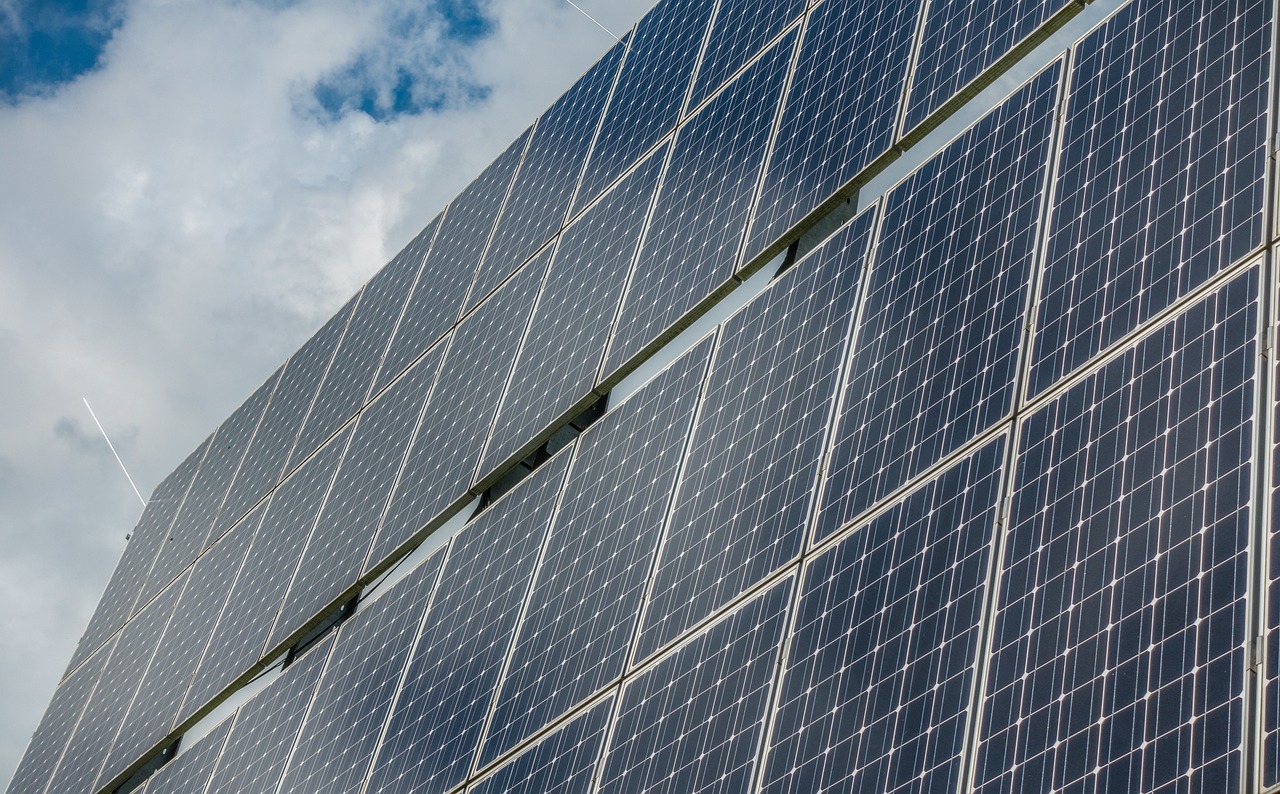
Benefits of Solar Power
Solar power is one of the most accessible and impactful forms of green energy available to homeowners today. Imagine harnessing the sun's energy to power your home, significantly reducing your electricity bills while simultaneously contributing to a healthier planet. It's like having a personal energy source that not only saves you money but also helps combat climate change. The benefits of solar power are numerous, and they extend beyond just financial savings; they create a sustainable future for generations to come.
First and foremost, installing solar panels can lead to substantial savings on energy costs. According to various studies, homeowners can save up to 70% on their electricity bills after switching to solar energy. This is because once the solar panels are installed, the energy generated from sunlight is essentially free. Over time, these savings can accumulate to thousands of dollars, making solar power a wise investment. Additionally, many states offer net metering, which allows homeowners to sell excess energy back to the grid, further increasing savings.
Moreover, solar energy systems are incredibly low maintenance. Once the panels are installed, they require minimal upkeep. A simple cleaning a couple of times a year is usually sufficient to keep them functioning optimally. This is in stark contrast to traditional energy sources, which often require ongoing maintenance and repairs. The longevity of solar panels also adds to their appeal; most solar systems come with warranties that last 20-25 years, ensuring that your investment is protected.
Another significant advantage is the positive impact on the environment. By switching to solar energy, you're reducing your carbon footprint and contributing to a decrease in greenhouse gas emissions. This is crucial in the fight against climate change, as traditional energy sources like coal and natural gas are major contributors to air pollution and global warming. In fact, the average residential solar system can offset around 3-4 tons of carbon dioxide annually, which is equivalent to planting over 100 trees each year!
Solar power also enhances energy independence. By generating your own electricity, you are less reliant on the grid and less vulnerable to rising energy prices. This independence not only provides peace of mind but also contributes to national energy security. As more households adopt solar energy, the demand for fossil fuels decreases, paving the way for a cleaner, more sustainable energy future.
Lastly, the aesthetic appeal of solar panels has improved significantly over the years. Modern solar technology has evolved to not only be efficient but also visually appealing. Homeowners can choose from a variety of designs and installations that best suit their homes, ensuring that functionality does not compromise style.
In summary, the benefits of solar power are clear and compelling. From financial savings and low maintenance to environmental benefits and energy independence, solar energy represents a powerful solution for homeowners looking to embrace a greener lifestyle. So, why not take the plunge and invest in solar power? The sun is shining, and it's time to harness its potential!
- How much can I save by installing solar panels? - On average, homeowners can save between 50% to 70% on their electricity bills.
- What happens on cloudy days? - Solar panels can still generate electricity on cloudy days, though at reduced efficiency.
- Are there tax incentives for solar panel installation? - Yes, many governments offer tax credits and rebates to encourage solar energy adoption.
- How long do solar panels last? - Most solar panels come with warranties of 20-25 years, but they can last longer with proper maintenance.
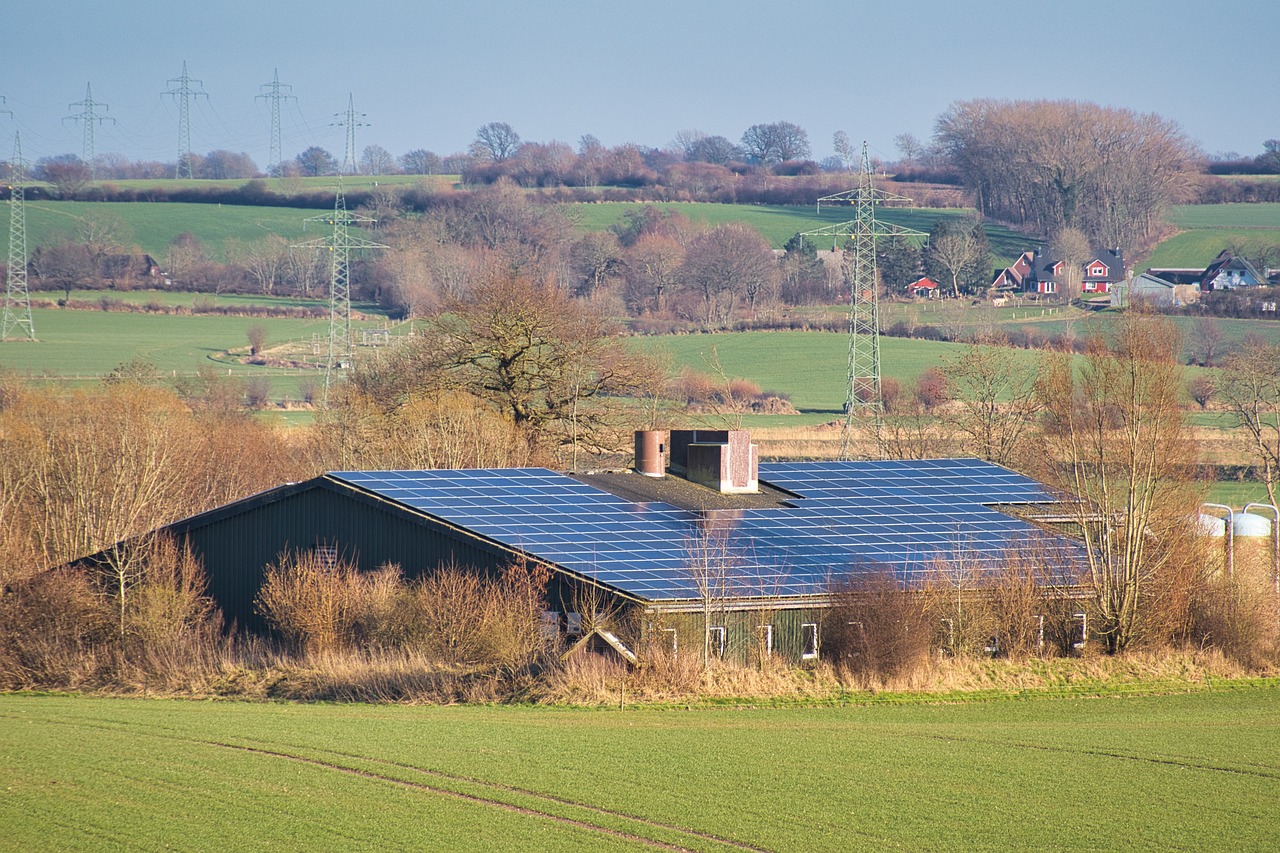
Types of Solar Panels
When it comes to harnessing the power of the sun, understanding the different types of solar panels is crucial. Each type of solar panel has unique features and efficiencies that can significantly impact your energy production and overall investment. Let’s dive into the three main types of solar panels: monocrystalline, polycrystalline, and thin-film. By knowing their characteristics, you can make an informed choice that aligns with your energy needs and budget.
Monocrystalline solar panels are often regarded as the premium option in the solar market. Made from a single crystal structure, these panels are known for their high efficiency, typically ranging from 15% to 22%. This means that they can convert a larger percentage of sunlight into usable energy compared to other types. Additionally, they tend to have a longer lifespan, often exceeding 25 years, making them a solid long-term investment for homeowners looking to reduce their carbon footprint.
On the other hand, polycrystalline solar panels are made from multiple silicon crystals, which gives them a distinctive blue hue. While they are generally more affordable than their monocrystalline counterparts, they also come with slightly lower efficiency ratings, usually between 13% and 16%. However, they still provide a viable option for those who want to adopt solar energy without breaking the bank. Their manufacturing process is also less energy-intensive, which can be a plus for environmentally conscious consumers.
Lastly, we have thin-film solar panels, which are made by layering photovoltaic materials onto a substrate. These panels are lightweight and flexible, making them ideal for unconventional installations, such as on curved surfaces. However, their efficiency is typically lower, ranging from 10% to 12%. Despite this, they can perform better than other types in low-light conditions, which might be beneficial depending on your geographic location.
| Type of Solar Panel | Efficiency | Cost | Best For |
|---|---|---|---|
| Monocrystalline | 15% - 22% | High | Long-term investment, limited space |
| Polycrystalline | 13% - 16% | Medium | Budget-friendly options |
| Thin-film | 10% - 12% | Low | Flexible installations, low-light performance |
In summary, the choice between monocrystalline, polycrystalline, and thin-film solar panels depends on several factors, including your budget, space availability, and energy needs. By weighing the pros and cons of each type, you can select the solar panel that best fits your home and lifestyle, ultimately contributing to a greener future.
- What is the lifespan of solar panels? Most solar panels last between 25 to 30 years, with warranties often covering this period.
- Do I need to clean my solar panels? Yes, keeping your solar panels clean can optimize their efficiency, especially in dusty areas.
- Can solar panels work in cloudy weather? Absolutely! Solar panels can still generate energy even on cloudy days, though their efficiency may be reduced.

Monocrystalline Solar Panels
When it comes to solar energy, often steal the spotlight, and for good reason! These panels are made from a single crystal structure, which allows them to achieve higher efficiency rates compared to other types. This means that they can convert more sunlight into electricity, making them an ideal choice for homeowners looking to maximize their energy production.
One of the standout features of monocrystalline panels is their sleek, black appearance. Not only do they look modern and aesthetically pleasing on rooftops, but their design also contributes to their efficiency. The uniform structure allows electrons to flow more freely, which enhances their performance, especially in low-light conditions. So, if you're in an area that doesn't get much sun, these panels might just be your best bet!
But let's talk numbers! Typically, monocrystalline solar panels have an efficiency rating of around 15% to 22%, which is significantly higher than their polycrystalline counterparts. This efficiency translates into a smaller footprint on your roof, as you may need fewer panels to meet your energy needs. Here’s a quick comparison:
| Type of Solar Panel | Efficiency Rate | Average Lifespan | Cost |
|---|---|---|---|
| Monocrystalline | 15% - 22% | 25 years | Higher |
| Polycrystalline | 13% - 16% | 20 years | Lower |
Investing in monocrystalline solar panels does come with a higher upfront cost, but the long-term savings on energy bills and the durability of the panels often make it worth the investment. Plus, many manufacturers offer warranties that last up to 25 years, giving you peace of mind about your purchase.
In terms of installation, these panels are typically lightweight and easy to handle, which can reduce labor costs. Their longevity and efficiency make them a popular choice among homeowners who want to contribute to a greener planet while also enjoying the financial benefits of lower energy bills.
So, if you’re considering going solar, don’t overlook the advantages of monocrystalline solar panels. They may just be the perfect fit for your home, offering both performance and aesthetic appeal. Remember, when it comes to harnessing the power of the sun, every little bit helps, and choosing the right type of solar panel can make all the difference!
- What are the main advantages of monocrystalline solar panels? They offer higher efficiency, a longer lifespan, and a sleek appearance.
- Are monocrystalline panels worth the investment? Yes, despite the higher upfront cost, they can lead to significant long-term savings on energy bills.
- How long do monocrystalline solar panels last? Typically, they have a lifespan of around 25 years.

Polycrystalline Solar Panels
Polycrystalline solar panels are an excellent choice for homeowners looking to adopt green energy solutions without breaking the bank. These panels are made from multiple silicon crystals, which gives them a distinct blue hue and a unique texture. Unlike their monocrystalline counterparts, which are made from a single crystal structure, polycrystalline panels are produced by melting silicon fragments together. This process is not only less expensive but also results in panels that are slightly less efficient. However, the cost-effectiveness of polycrystalline panels makes them a popular option for many households.
One of the major advantages of polycrystalline solar panels is their affordability. They typically come at a lower price point than monocrystalline panels, making them a more accessible option for budget-conscious homeowners. In fact, many people find that the initial savings on the purchase price can lead to significant long-term benefits, especially when considering the reduction in energy bills over time. Additionally, polycrystalline panels are often easier to install, which can further cut down on installation costs.
While polycrystalline panels are not as efficient as monocrystalline ones, they perform admirably in various conditions. They tend to have a good heat tolerance, meaning they can still generate power effectively even in warmer climates. However, it's essential to consider that their efficiency can drop slightly in extreme heat compared to monocrystalline panels. This is something to keep in mind when evaluating your specific location and energy needs.
Here's a quick comparison of the key features of polycrystalline solar panels:
| Feature | Polycrystalline Solar Panels |
|---|---|
| Efficiency | 15-20% |
| Cost | Lower than monocrystalline |
| Temperature Coefficient | Moderate |
| Lifespan | 25 years on average |
In summary, polycrystalline solar panels offer a fantastic balance between cost and performance, making them a viable option for many homeowners. They may not be the highest performers on the market, but their affordability and decent efficiency make them an attractive choice for those looking to contribute to a green energy revolution. As you weigh your options, consider your budget, energy needs, and the environmental impact of your choices. After all, every little bit helps when it comes to fostering a sustainable future!
1. How do polycrystalline solar panels compare to monocrystalline panels?
Polycrystalline panels are generally less efficient than monocrystalline panels, but they are also more affordable. They are a great option for those looking for cost-effectiveness while still contributing to green energy.
2. What is the average lifespan of polycrystalline solar panels?
Polycrystalline solar panels typically have an average lifespan of about 25 years, similar to monocrystalline panels.
3. Are polycrystalline panels suitable for all climates?
Yes, polycrystalline panels perform well in various climates, although their efficiency may slightly decrease in extreme heat compared to monocrystalline panels.
4. How much can I save on energy bills with polycrystalline solar panels?
The savings can vary based on your energy consumption, local electricity rates, and the size of your solar panel system, but many homeowners see a significant reduction in their energy bills over time.
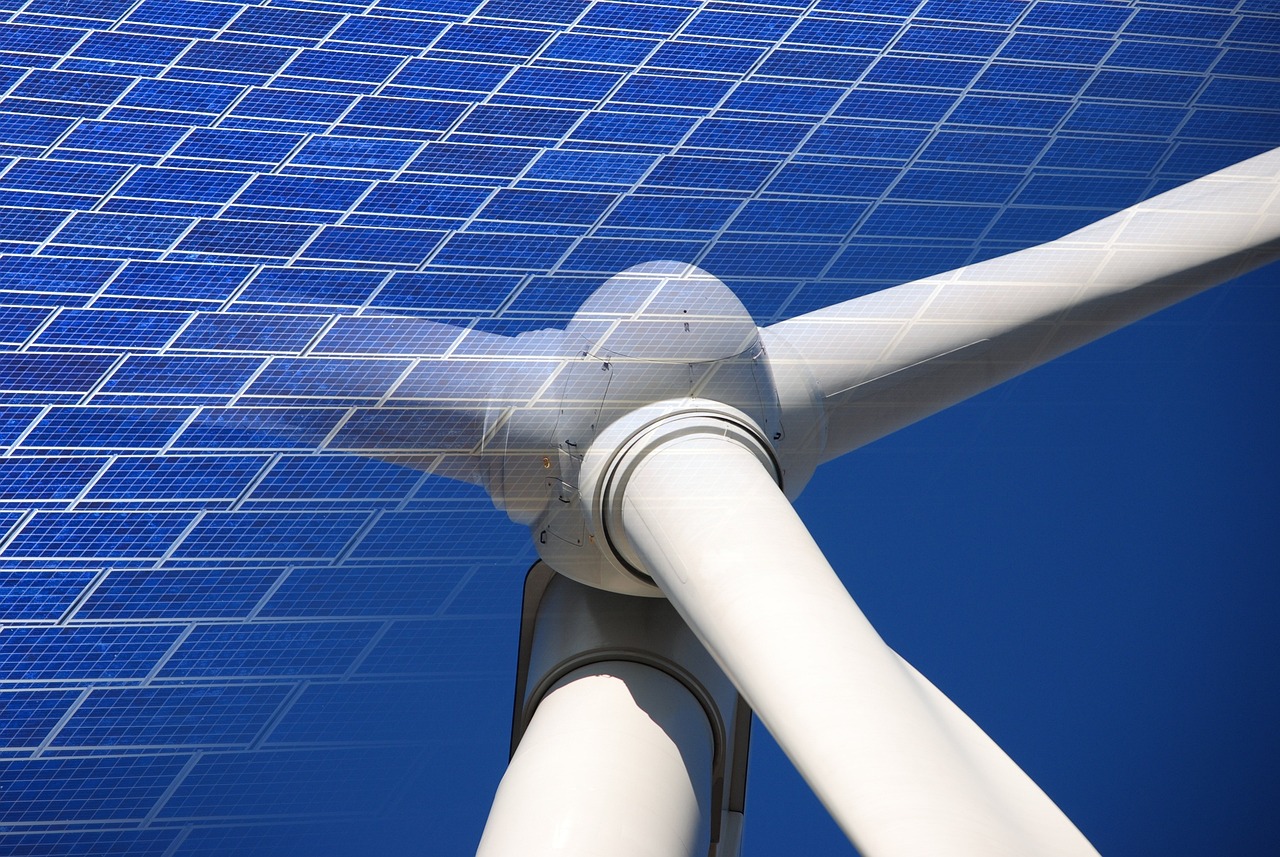
Solar Incentives and Rebates
When it comes to making the leap to solar energy, many homeowners may feel daunted by the initial costs. However, the good news is that there are numerous incentives and rebates available to help offset these expenses. Governments, both at the federal and state levels, recognize the importance of promoting renewable energy sources and often provide financial support to encourage homeowners to invest in solar technology.
One of the most significant incentives available is the Federal Investment Tax Credit (ITC). This program allows you to deduct a substantial percentage of the cost of installing solar panels from your federal taxes. For example, in 2023, the ITC allows homeowners to deduct 30% of the installation costs, which can lead to significant savings. Imagine reducing your tax bill while simultaneously investing in a cleaner future!
In addition to federal incentives, many states offer their own rebates and tax credits specifically for solar energy installations. These can vary widely depending on where you live. Some states provide cash rebates for solar panel installations, while others may offer property tax exemptions, meaning that your home’s value won’t increase due to the solar installation. This can be a huge relief for homeowners concerned about rising property taxes.
To give you a clearer picture, here’s a simple table summarizing some common solar incentives:
| Incentive Type | Description | Potential Savings |
|---|---|---|
| Federal Investment Tax Credit (ITC) | Deduct a percentage of solar installation costs from federal taxes. | 30% of installation costs |
| State Rebates | Cash rebates offered by state governments for solar installations. | Varies by state |
| Property Tax Exemptions | Exemption from increased property taxes due to solar installations. | Varies by state |
Moreover, many local utilities have their own incentive programs that can further reduce the costs associated with solar energy. These programs might include net metering, which allows you to sell excess energy generated by your solar panels back to the grid, effectively lowering your electricity bills. Additionally, some utilities offer performance-based incentives, where you receive payments based on the actual energy your solar system produces.
It’s worth noting that the availability of these incentives can change frequently, so it’s crucial to stay informed. Websites like the U.S. Department of Energy provide up-to-date information on available programs. By taking advantage of these incentives, not only can you save a significant amount of money upfront, but you can also contribute to a more sustainable future.
In conclusion, the combination of federal, state, and local incentives makes it more feasible than ever for homeowners to transition to solar energy. With these financial aids, the dream of a green home powered by renewable energy sources is not just a possibility; it’s an opportunity waiting to be seized!
- What is the Federal Investment Tax Credit? - It's a tax incentive that allows homeowners to deduct a percentage of the cost of solar panel installation from their federal taxes.
- Are there state-specific incentives for solar energy? - Yes, many states offer their own rebates and tax credits for solar installations, which can vary significantly.
- What is net metering? - Net metering allows homeowners to sell excess energy generated by their solar panels back to the grid, reducing their electricity bills.

Energy-Efficient Appliances
Switching to is one of the most straightforward yet impactful strategies you can employ to foster a greener home. Imagine this: every time you open your refrigerator or turn on your washing machine, you're not just using a machine; you're making a choice that affects your energy consumption and, ultimately, the planet. By choosing appliances that consume less energy, you can significantly reduce your household's carbon footprint while also saving money on your energy bills.
But what makes an appliance energy-efficient? Typically, these appliances are designed to use advanced technology that minimizes energy consumption without sacrificing performance. For example, a modern dishwasher might use less water and energy than older models, all while providing a thorough clean. This is not just about doing your part for the environment; it's about smart investment in your home. Over time, the savings can add up, making energy-efficient appliances a win-win situation.
When shopping for new appliances, look for the Energy Star label, which indicates that the product meets strict energy efficiency guidelines set by the U.S. Environmental Protection Agency. These products can save you money on your utility bills while also helping to protect the environment. Here's a quick overview of some common energy-efficient appliances you might consider:
| Appliance Type | Energy Savings | Benefits |
|---|---|---|
| Refrigerators | Up to 50% less energy | Better insulation, quieter operation |
| Washing Machines | Up to 30% less energy | Less water usage, gentler on clothes |
| Dishwashers | Up to 25% less energy | More efficient cleaning cycles |
| Ovens | Varies greatly | Better heat retention, faster cooking times |
By making informed choices about the appliances you bring into your home, you can not only reduce your energy consumption but also enhance your living environment. Plus, many of these appliances come equipped with features that provide greater convenience, such as smart technology that allows you to control them remotely. Imagine being able to start your washing machine from your phone while you're at work! How cool is that?
In essence, investing in energy-efficient appliances is a step toward a more sustainable lifestyle. It’s about making conscious choices that not only benefit you but also contribute to a healthier planet. So, the next time you're in the market for a new appliance, remember that your choice can be part of a larger movement toward sustainability.
- What are energy-efficient appliances? Energy-efficient appliances are designed to use less energy than standard models, which can help reduce your utility bills and carbon footprint.
- How can I identify energy-efficient appliances? Look for the Energy Star label, which indicates that the appliance meets energy efficiency guidelines.
- Are energy-efficient appliances more expensive? While they may have a higher upfront cost, they often save money in the long run through lower energy bills.
- Can I really save money with energy-efficient appliances? Yes! Many energy-efficient appliances can save you hundreds of dollars over their lifespan.

Identifying Energy Star Products
When it comes to creating a sustainable home, one of the most impactful steps you can take is to invest in Energy Star products. But how do you identify these energy-efficient appliances? The Energy Star label is your golden ticket! This label is not just a sticker; it represents a commitment to energy efficiency and environmental responsibility. Products that carry this label meet strict energy efficiency guidelines set by the U.S. Environmental Protection Agency (EPA).
To make your search easier, here are a few tips for identifying Energy Star products:
- Look for the Label: The most straightforward way to identify Energy Star products is to look for the Energy Star logo on the packaging or the product itself. This logo is a clear indicator that the product has been tested and meets the required standards.
- Check the Energy Guide Label: Many appliances come with an Energy Guide label that provides information on the estimated annual energy consumption. Compare this with similar products to see which one is more efficient.
- Research Online: Websites like the Energy Star official site provide a comprehensive list of certified products. You can search by category, brand, or even specific features to find the best options for your home.
Investing in Energy Star products not only helps reduce your carbon footprint but also saves you money in the long run. For instance, Energy Star appliances use about 10-50% less energy than standard models, which can lead to significant savings on your utility bills. Imagine slashing your energy costs while contributing to a healthier planet—sounds like a win-win, right?
Moreover, many Energy Star products come with additional features that enhance their efficiency. For example, modern Energy Star refrigerators often have better insulation and advanced cooling technologies, which keep your food fresher for longer while using less energy. It's like having a personal assistant that not only keeps your groceries cool but also helps you save money!
In summary, identifying Energy Star products is a crucial step towards building a greener home. By paying attention to labels, utilizing online resources, and understanding the benefits of these appliances, you can make informed choices that align with your sustainability goals. So, the next time you’re shopping for a new appliance, remember: choose wisely, save energy, and lead the way to a sustainable future!
Q: What is the Energy Star program?
A: The Energy Star program is a voluntary labeling program created by the EPA that helps consumers identify energy-efficient products and practices. Products that earn the Energy Star label meet strict energy efficiency criteria.
Q: How much can I save by using Energy Star products?
A: On average, Energy Star products can save you about 10-50% on energy costs compared to standard products, depending on the category and usage.
Q: Are Energy Star products more expensive?
A: While the initial cost of Energy Star products may be higher, the savings on your utility bills over time often outweigh this cost. Moreover, many states offer rebates and incentives to help offset the purchase price.
Q: How can I find Energy Star products in my area?
A: You can visit the official Energy Star website to search for certified products by category or brand. Additionally, many retailers clearly display Energy Star products in their stores.

Smart Home Technology
In today's fast-paced world, is revolutionizing the way we interact with our living spaces. Imagine walking into your home, and the lights automatically adjust to your preferred brightness, the thermostat sets itself to the perfect temperature, and your favorite playlist starts playing—all without you lifting a finger! This is the magic of smart home devices, and they play a crucial role in promoting energy efficiency and sustainability.
At the heart of a smart home is the ability to monitor and control energy usage in real-time. Smart thermostats, for instance, learn your habits and adjust heating and cooling accordingly. They can even be controlled remotely via your smartphone, allowing you to ensure that your home is comfortable without wasting energy when you're not there. According to a study, households that use smart thermostats can save up to 10-12% on heating and cooling costs annually. That’s like getting a little bonus every year just for being smart!
Another exciting aspect of smart home technology is the integration of smart lighting systems. These systems not only allow you to control the brightness and color of your lights but can also be programmed to switch off automatically when you leave a room. Imagine the energy savings when you never have to worry about whether you left the lights on! Furthermore, many smart bulbs are designed to use significantly less energy than traditional bulbs, contributing to a greener environment.
But wait, there's more! Smart plugs and energy monitors can help you track the energy consumption of individual devices. By plugging your appliances into smart plugs, you can turn them off remotely or set schedules to ensure they only run when you need them. This can be particularly useful for devices that consume energy even when they’re off, like chargers and entertainment systems. It's like having a personal energy assistant right at your fingertips!
Here’s a quick overview of some popular smart home technologies:
| Device | Functionality | Energy Savings |
|---|---|---|
| Smart Thermostat | Adjusts heating/cooling based on your habits | 10-12% annually |
| Smart Lighting | Controls brightness and color, schedules | Up to 80% less energy than traditional bulbs |
| Smart Plugs | Remote control of devices, schedules | Reduces phantom energy use |
Integrating these technologies into your home not only enhances your comfort but also significantly contributes to a greener lifestyle. While the initial investment in smart home devices might seem daunting, the long-term savings on your energy bills can more than justify the costs. Plus, you’ll be doing your part to help the planet, which is a win-win situation!
So, are you ready to embrace the future? With smart home technology, you can transform your living space into an energy-efficient sanctuary. The best part? You’ll be part of a larger movement towards sustainability and environmental responsibility, inspiring others to follow suit. Let’s make our homes smarter, one device at a time!
- What is smart home technology? Smart home technology refers to devices that automate tasks and enhance energy efficiency in your home, allowing for remote control and monitoring.
- How much can I save with smart home devices? Savings can vary, but many users report reductions in energy costs ranging from 10% to 30% annually.
- Are smart home devices difficult to install? Most smart home devices are designed for easy installation, often requiring just a smartphone app and a Wi-Fi connection.

Home Insulation Techniques
When it comes to creating an energy-efficient home, proper insulation is like the cozy blanket that keeps your home warm in winter and cool in summer. It’s not just about comfort; it’s about reducing your energy bills and minimizing your carbon footprint. Insulation works by slowing down the transfer of heat, which means that in the colder months, your heating system won’t have to work as hard, and in the warmer months, your air conditioning can take a breather too. But how do you ensure your home is adequately insulated? Let’s explore some effective techniques that can help you maintain that perfect temperature all year round.
One of the first things to consider is the type of insulation material you choose. Different materials come with varying levels of effectiveness and suitability for different areas of your home. Here’s a quick overview of some common insulation materials:
| Insulation Material | R-Value (Thermal Resistance) | Ideal Application |
|---|---|---|
| Fiberglass | 2.9 - 4.3 per inch | Walls, attics, and floors |
| Foam Board | 3.6 - 4.2 per inch | Basements, exterior walls, and roofs |
| Cellulose | 3.1 - 3.8 per inch | Attics and walls |
As you can see, each material has its strengths, and choosing the right one can significantly impact your home’s energy efficiency. For instance, fiberglass is widely popular due to its affordability and ease of installation. However, if you’re looking for something with a higher R-value, foam board might be your best bet, especially for areas exposed to the elements.
Now, let’s talk about how you can enhance your home’s insulation with some DIY techniques. Many homeowners might not realize that simple actions can lead to substantial improvements. For example, sealing gaps and cracks around windows and doors with weather stripping or caulk can prevent drafts and keep your conditioned air inside. You’d be surprised at how much energy you can save just by addressing these small issues!
Another effective method is to insulate your attic. Since heat rises, a poorly insulated attic can be a significant source of energy loss. Adding insulation batts or rolls can help trap heat in the winter and keep your home cooler in the summer. Plus, it’s an excellent weekend project that doesn’t require professional help.
In addition to these techniques, consider using reflective insulation in warmer climates. This type of insulation reflects radiant heat away from living spaces, making it perfect for attics. It’s like having a sunblock for your home, keeping it cool even when the sun is blazing outside.
Finally, don’t overlook the importance of proper ventilation. Insulation works best when combined with adequate airflow to prevent moisture buildup, which can lead to mold and mildew. Installing vents in your attic or using exhaust fans in your kitchen and bathroom can help maintain a healthy balance.
- How do I know if my home is well insulated? A good indicator is your energy bills. If they’re higher than average for your area, it might be time to check your insulation.
- Can I install insulation myself? Yes! Many insulation types, like fiberglass batts, can be installed by homeowners with some basic tools and safety precautions.
- What is the best type of insulation for my home? It depends on your climate and specific needs. Consulting with a professional can help you make the best choice.

Types of Insulation Materials
When it comes to ensuring your home is energy efficient, the type of insulation material you choose plays a crucial role. There are several options available, each with its own set of advantages and ideal applications. Understanding these options can help you make an informed decision that not only enhances your home's comfort but also contributes to a greener future.
One of the most common insulation materials is fiberglass. Fiberglass insulation is made from tiny glass fibers and is often available in batts or rolls. It is known for its excellent thermal performance and soundproofing qualities. Additionally, fiberglass is relatively affordable and non-combustible, making it a popular choice for many homeowners. However, it’s important to handle it with care, as the tiny glass fibers can irritate the skin and lungs.
Another widely used option is foam insulation, which comes in various forms, including spray foam and rigid foam boards. Spray foam insulation expands upon application, filling gaps and creating an airtight seal that significantly reduces air leakage. This type of insulation is particularly effective in hard-to-reach areas and can improve energy efficiency dramatically. Rigid foam boards, on the other hand, provide high insulation value with a thinner profile, making them suitable for exterior walls and foundations.
Cellulose insulation is another eco-friendly choice made from recycled paper products. It is treated with fire retardants and is blown into walls, attics, and floors. Cellulose is known for its ability to resist settling over time, ensuring long-lasting performance. Moreover, its dense structure helps to minimize air movement, which can lead to greater energy savings. For those who prioritize sustainability, cellulose is an excellent option that reduces waste and promotes recycling.
In addition to these common materials, there are also mineral wool and cotton insulation options. Mineral wool, also known as rock wool, is made from natural or recycled materials and offers excellent fire resistance and soundproofing capabilities. Cotton insulation, derived from recycled denim, is another sustainable choice that is safe to handle and provides good thermal performance.
In summary, the choice of insulation material can greatly affect your home's energy efficiency and comfort. When considering insulation, keep in mind the following factors:
- R-value: The higher the R-value, the better the insulation's effectiveness.
- Environmental impact: Consider using recycled or sustainable materials.
- Installation ease: Some materials are easier to install than others, especially for DIY projects.
By selecting the right insulation material, you not only enhance your home's energy efficiency but also contribute to a greener planet. Remember, the goal is to create a comfortable living space while minimizing your carbon footprint. So, take the time to research and choose wisely!
1. What is the best insulation material for my home?
The best insulation material depends on various factors, including your climate, budget, and specific needs. Fiberglass, foam, and cellulose are all excellent options, each with unique benefits.
2. How much insulation do I need?
The amount of insulation required varies by location and home design. Generally, a higher R-value is recommended for colder climates, while milder climates may require less insulation.
3. Can I install insulation myself?
Yes, many insulation types can be installed as DIY projects, especially batts and rolls. However, spray foam insulation may require professional installation for optimal results.
4. Is insulation material safe for my family?
Most insulation materials, such as fiberglass and cellulose, are safe when installed correctly. Always follow safety guidelines and consider using eco-friendly options like cotton or cellulose for added peace of mind.

DIY Insulation Tips
Improving your home's insulation doesn't always require hiring professionals. In fact, many homeowners can take matters into their own hands and implement simple yet effective DIY insulation techniques. By doing so, not only can you enhance energy efficiency, but you can also save money on utility bills while contributing to a greener planet. So, what are some practical steps you can take to insulate your home effectively?
First and foremost, it’s essential to identify the areas in your home that require insulation. Common culprits include attics, basements, and walls. Once you pinpoint these spots, you can choose the appropriate materials for insulation. Here are a few DIY tips to get you started:
- Seal Gaps and Cracks: Use caulk or expanding foam to seal any gaps around windows, doors, and other penetrations. This simple step can prevent drafts and significantly enhance your home's thermal envelope.
- Insulate Your Attic: If your attic is not insulated, consider adding fiberglass batts or blown-in insulation. This can help keep your home warm in the winter and cool in the summer.
- Use Reflective Insulation: In warmer climates, reflective insulation can be beneficial. Installing radiant barriers in your attic can help reflect heat away from your living spaces.
Additionally, you might want to consider using insulating window films. These films can be applied directly to your windows, reducing heat transfer and improving energy efficiency. Not only are they easy to install, but they also enhance comfort by minimizing drafts.
Another effective DIY method is to insulate your water heater. Water heaters can lose a significant amount of heat, so wrapping them in an insulating blanket can help retain that heat and reduce energy consumption. This is a quick and inexpensive project that pays off in the long run.
Lastly, don't overlook the importance of weatherstripping. Adding weatherstripping around doors and windows can create an airtight seal, preventing cold air from entering your home. This simple step can make a noticeable difference in your home's comfort and energy efficiency.
In conclusion, DIY insulation projects can be a rewarding way to improve your home's energy efficiency. By taking the initiative to seal gaps, insulate key areas, and use reflective materials, you can create a more comfortable living environment while reducing your carbon footprint. Remember, every little bit helps when it comes to fostering a green energy revolution at home!
1. How can I tell if my home needs more insulation?
Signs that your home may need more insulation include high energy bills, drafts, and uneven temperatures in different rooms. A professional energy audit can also help identify insulation deficiencies.
2. What materials are best for DIY insulation?
Common DIY insulation materials include fiberglass batts, foam boards, and cellulose. Reflective insulation is also a great option for attics in warmer climates.
3. Can I insulate my home in stages?
Absolutely! You can tackle insulation improvements one area at a time, focusing on the most critical areas first, such as the attic and basement.
4. Is it safe to install insulation myself?
Most insulation materials can be safely installed by homeowners, but make sure to follow safety guidelines and manufacturer instructions. If you're unsure, consult with a professional.
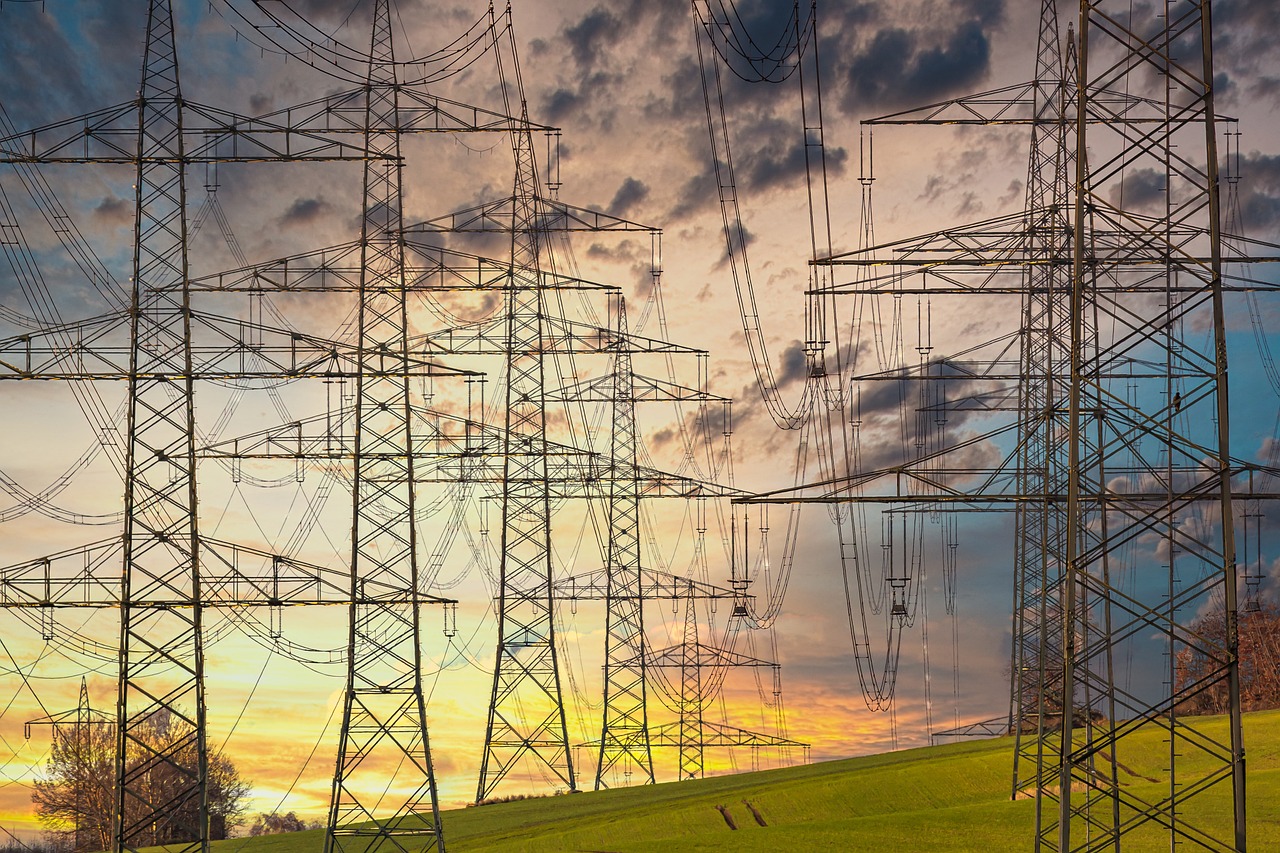
Community Involvement
Fostering a green energy revolution at home isn't just a solo mission; it's a collective journey that thrives on community involvement. Think about it: when individuals come together, their efforts can create a ripple effect that leads to significant change. By participating in local initiatives, we can amplify our impact, making sustainable living not just a personal goal but a community-wide movement. So, how can you get involved? Let’s explore some exciting ways you can take part in this green energy revolution right in your neighborhood!
One fantastic way to engage with your community is by participating in local energy programs. Many towns and cities offer initiatives aimed at promoting renewable energy sources. These programs often include educational workshops, community solar projects, and even group purchasing programs that allow residents to buy solar panels at a discounted rate. By joining in, you not only gain valuable knowledge but also connect with like-minded individuals who are equally passionate about sustainability.
Additionally, advocating for sustainable policies is another crucial aspect of community involvement. Have you ever thought about how local government decisions can impact your energy choices? By voicing your support for renewable energy initiatives, you can influence local policies that promote sustainability. This can range from pushing for incentives for solar panel installations to advocating for improved public transportation options that reduce carbon emissions. Every voice matters, and when many voices unite, they can lead to significant policy changes.
Moreover, consider organizing or participating in community clean-up days or tree-planting events. These activities not only beautify your neighborhood but also contribute to a healthier environment. Engaging in such events fosters a sense of community, encourages teamwork, and raises awareness about the importance of green practices. Remember, every little action counts, and when done collectively, the impact can be monumental!
To make it easier for you to find local programs and initiatives, here’s a quick table summarizing some common community involvement opportunities:
| Opportunity | Description | How to Get Involved |
|---|---|---|
| Local Energy Programs | Workshops and group purchasing for renewable energy solutions. | Check your city’s website or local community boards. |
| Advocacy Groups | Organizations that promote sustainable policies and practices. | Join local advocacy groups or attend town hall meetings. |
| Community Clean-Ups | Events focused on cleaning up local parks and neighborhoods. | Look for announcements on social media or community centers. |
| Tree Planting | Community events to plant trees and enhance local greenery. | Participate in local environmental organizations. |
In summary, community involvement is a powerful catalyst for change in the green energy landscape. By actively participating in local initiatives, advocating for sustainable policies, and engaging in community events, you not only contribute to a healthier planet but also build a stronger, more connected community. So, roll up your sleeves and get involved—together, we can foster a green energy revolution that benefits everyone!
Q1: How can I find local renewable energy programs?
A1: Check your city or town’s official website, local community boards, or social media groups dedicated to environmental initiatives.
Q2: What are some effective ways to advocate for sustainable policies?
A2: Attend town hall meetings, join local advocacy groups, and communicate with your elected officials about the importance of renewable energy.
Q3: Can I participate in community clean-up events even if I’m new to the area?
A3: Absolutely! Community events are open to everyone and are a great way to meet new people while contributing positively to your surroundings.

Participating in Local Energy Programs
Getting involved in local energy programs is a fantastic way to contribute to the green energy movement while also benefiting your community. These programs often provide resources, support, and incentives for individuals who want to embrace renewable energy solutions. Imagine being part of a collective effort that not only reduces your carbon footprint but also promotes a sustainable lifestyle for everyone around you!
Many communities have established initiatives aimed at increasing the adoption of renewable energy sources. These can include community solar projects, energy efficiency workshops, and even local government programs that offer financial incentives for using green technology. By participating, you can tap into valuable resources that make the transition to renewable energy much smoother. For instance, community solar projects allow you to benefit from solar power even if you can't install panels on your own property.
To find local energy programs in your area, start by checking with your city or county’s energy department. They often have information on available programs and how to get involved. Additionally, many non-profit organizations focus on sustainability and may offer workshops or volunteer opportunities that can enhance your knowledge and engagement in renewable energy.
Here are some ways you can participate:
- Join Community Solar Programs: If you can't install solar panels on your roof, consider joining a community solar project. This allows you to benefit from solar energy generated elsewhere while supporting local renewable energy initiatives.
- Attend Workshops: Many local organizations host workshops on energy efficiency, renewable energy technologies, and sustainable living practices. These are great opportunities to learn and connect with like-minded individuals.
- Volunteer: Get involved with local environmental groups that focus on promoting renewable energy. Volunteering can amplify your impact and help spread awareness about the importance of green energy.
In addition to these options, you can also advocate for local policies that support renewable energy initiatives. Engaging with local government officials and expressing your support for sustainable policies can lead to significant changes in how your community approaches energy use. After all, when individuals come together for a common cause, the impact can be truly remarkable!
In summary, participating in local energy programs not only enhances your understanding of renewable energy but also empowers you to make a difference in your community. So why wait? Dive in and see how you can contribute to a greener future right where you live!
Q1: What are local energy programs?
Local energy programs are initiatives organized by communities or local governments aimed at promoting renewable energy adoption and energy efficiency. They often include resources, workshops, and financial incentives for residents.
Q2: How can I find local energy programs?
You can find local energy programs by checking with your city or county’s energy department, visiting local non-profit organizations focused on sustainability, or searching online for community initiatives in your area.
Q3: Can I benefit from solar energy if I can't install panels on my home?
Yes! Community solar programs allow you to purchase or lease a portion of a solar farm, enabling you to benefit from solar energy without having to install panels on your own property.
Q4: How do I advocate for renewable energy policies?
You can advocate for renewable energy policies by attending local government meetings, contacting your elected officials, and joining local environmental groups that focus on sustainability and energy issues.

Advocating for Sustainable Policies
Advocating for sustainable policies is not just a task for politicians or environmental organizations; it's a responsibility that each of us can embrace. Imagine if every household in your community took a stand for green energy initiatives! The ripple effect could be monumental, influencing local governance and leading to significant changes in how energy is produced and consumed. By raising our voices, we can encourage decision-makers to prioritize renewable energy sources and implement policies that support sustainable practices.
One way to get started is by engaging with local government meetings. These gatherings often provide a platform for residents to express their concerns and suggestions. Why not take a moment to share your vision for a greener community? Bringing attention to the benefits of renewable energy not only helps inform others but also fosters a collective desire for change. You could even prepare a short presentation highlighting the advantages of solar energy, wind power, or energy-efficient practices.
Additionally, joining or forming local advocacy groups can amplify your voice. These groups can work together to campaign for specific policies, such as:
- Incentives for homeowners to install solar panels.
- Funding for community renewable energy projects.
- Education programs on energy efficiency.
When advocating, it’s essential to communicate effectively. Consider utilizing social media platforms to spread awareness about sustainable policies. Sharing articles, infographics, and personal stories can engage your community and inspire action. Remember, a picture is worth a thousand words; a compelling image of a solar panel installation or a community solar farm can capture attention and spark interest.
Moreover, collaborating with local businesses can create a unified front for sustainability. Many companies are eager to enhance their corporate social responsibility and may be willing to partner in promoting green initiatives. Whether it’s sponsoring an event or providing resources for a community project, these partnerships can be invaluable.
Lastly, don’t underestimate the power of petitions. Organizing a petition to support a specific sustainable policy can demonstrate public interest and pressure local officials to take action. Make sure to gather signatures both online and offline to maximize reach. The more voices you gather, the stronger your message becomes.
In conclusion, advocating for sustainable policies is a crucial step towards fostering a green energy revolution. By engaging with your community, utilizing social media, collaborating with local businesses, and organizing petitions, you can help create a more sustainable future. Remember, every small effort counts. Together, we can turn the tide towards a greener planet!
- What are some effective ways to advocate for sustainable policies? Engaging in local government meetings, joining advocacy groups, using social media, collaborating with businesses, and organizing petitions are all effective methods.
- How can I get involved in local energy programs? Research local initiatives, attend community meetings, and connect with local environmental organizations to find out how you can participate.
- What impact can individual advocacy have on local policies? Individual advocacy can create a ripple effect, influencing local governance and encouraging collective action towards sustainable energy solutions.
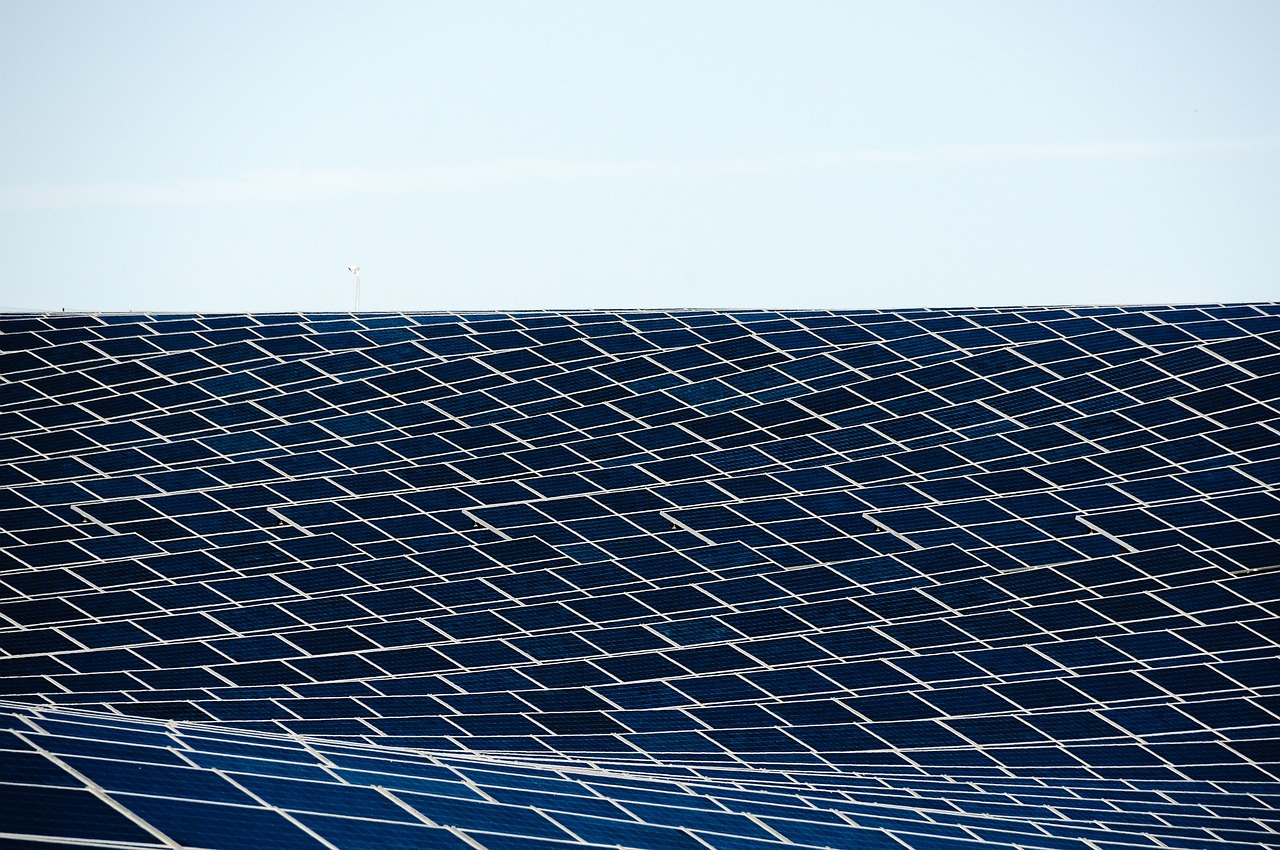
Conclusion: The Future of Green Energy at Home
As we stand on the brink of a new era, the shift towards green energy at home is not just a trend; it's a necessity for a sustainable future. With the effects of climate change becoming increasingly evident, adopting green energy practices can significantly contribute to reducing our carbon footprints. Imagine a world where your home not only powers itself but also contributes to a cleaner, greener planet. This is not merely a dream—it's an achievable reality!
Homeowners have a unique opportunity to lead the charge in this green energy revolution. By embracing technologies like solar panels, energy-efficient appliances, and smart home systems, we can drastically cut down on energy consumption and costs. It’s like turning your home into a mini power plant, generating clean energy while saving money. The benefits are multifaceted:
- Environmental Impact: Reducing reliance on fossil fuels helps mitigate climate change.
- Financial Savings: Lower energy bills mean more money in your pocket.
- Energy Independence: Generate your own energy and reduce vulnerability to utility price hikes.
Moreover, the integration of community involvement and advocacy can amplify individual efforts. By participating in local energy programs and pushing for sustainable policies, we can create a ripple effect that fosters a widespread green energy culture. Together, we can transform our neighborhoods into vibrant hubs of sustainability.
In conclusion, the future of green energy at home is bright, and it starts with each one of us taking action. Whether it’s installing solar panels, choosing energy-efficient appliances, or simply advocating for greener policies, every step counts. So, are you ready to join the revolution? The time for change is now!
Here are some common questions regarding green energy practices at home:
- What is green energy? Green energy refers to renewable energy sources that are environmentally friendly, such as solar, wind, and hydro energy.
- How can I start using solar power in my home? You can start by researching solar panel options, checking for local incentives, and consulting with installers to find the best fit for your home.
- Are energy-efficient appliances worth the investment? Yes! While they may have a higher upfront cost, energy-efficient appliances can save you money in the long run through reduced energy bills.
- How can I get involved in my community's green energy initiatives? Look for local programs, attend community meetings, and connect with local advocacy groups focused on renewable energy.
Frequently Asked Questions
- What is green energy?
Green energy refers to renewable energy sources that are environmentally friendly, such as solar, wind, and hydroelectric power. These sources help reduce carbon footprints and promote sustainable living.
- How can I benefit from installing solar panels?
Installing solar panels can significantly lower your energy bills, increase your home's value, and reduce reliance on fossil fuels. Plus, many governments offer incentives and rebates to make solar energy more affordable.
- What types of solar panels are available?
There are three main types of solar panels: monocrystalline, polycrystalline, and thin-film. Monocrystalline panels are highly efficient, polycrystalline panels are more affordable, and thin-film panels are lightweight and flexible.
- How do I identify Energy Star-rated appliances?
Energy Star-rated appliances meet strict efficiency guidelines set by the EPA. You can identify these products by looking for the Energy Star label on the appliance, which indicates they consume less energy than standard models.
- What are some effective home insulation techniques?
Effective insulation techniques include using materials like fiberglass, foam, or cellulose, and ensuring proper sealing of windows and doors. This helps maintain temperature and reduces the need for heating and cooling.
- How can I get involved in local energy programs?
Many communities offer programs that support renewable energy adoption. You can get involved by researching local initiatives, attending community meetings, and participating in group actions that promote green energy solutions.
- What role does advocacy play in promoting green energy?
Advocacy is crucial for promoting green energy as it influences local policies and encourages governments to support renewable energy initiatives. Individuals can advocate by contacting local representatives and participating in campaigns.



















